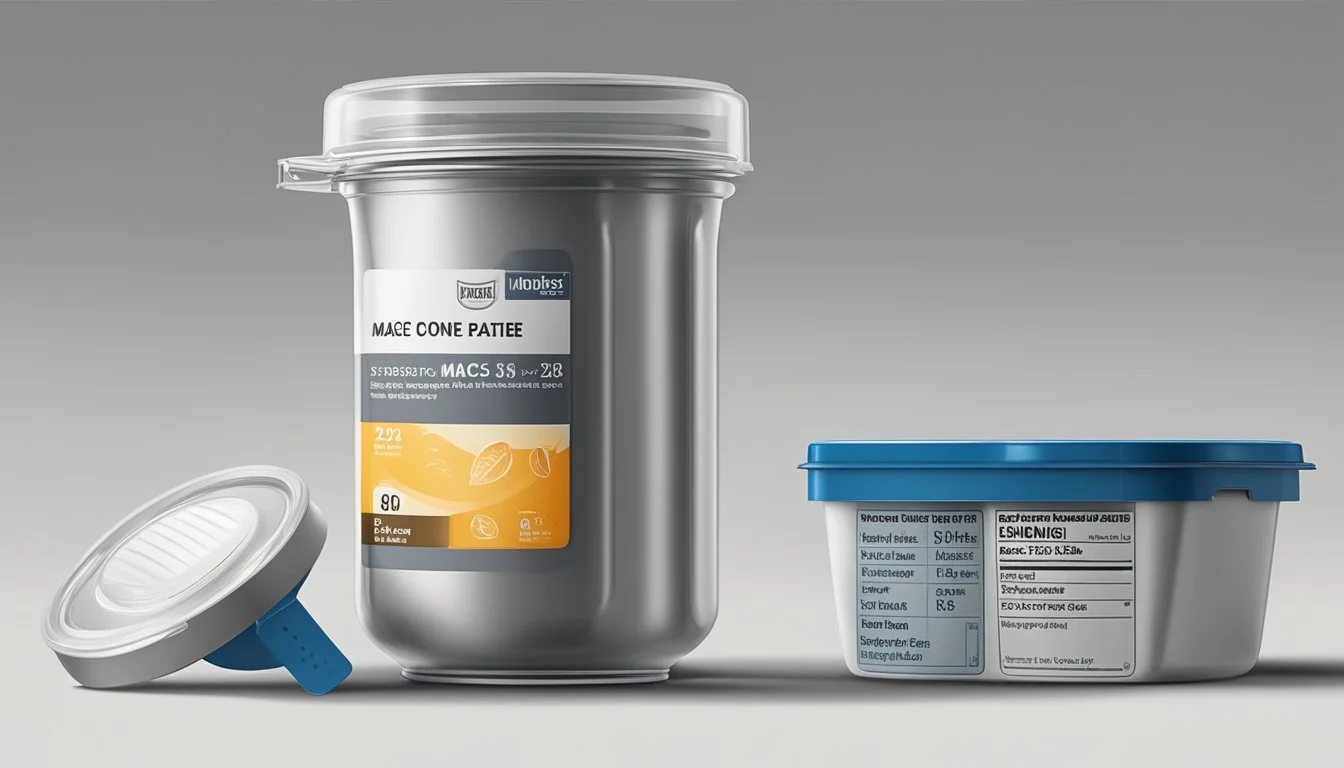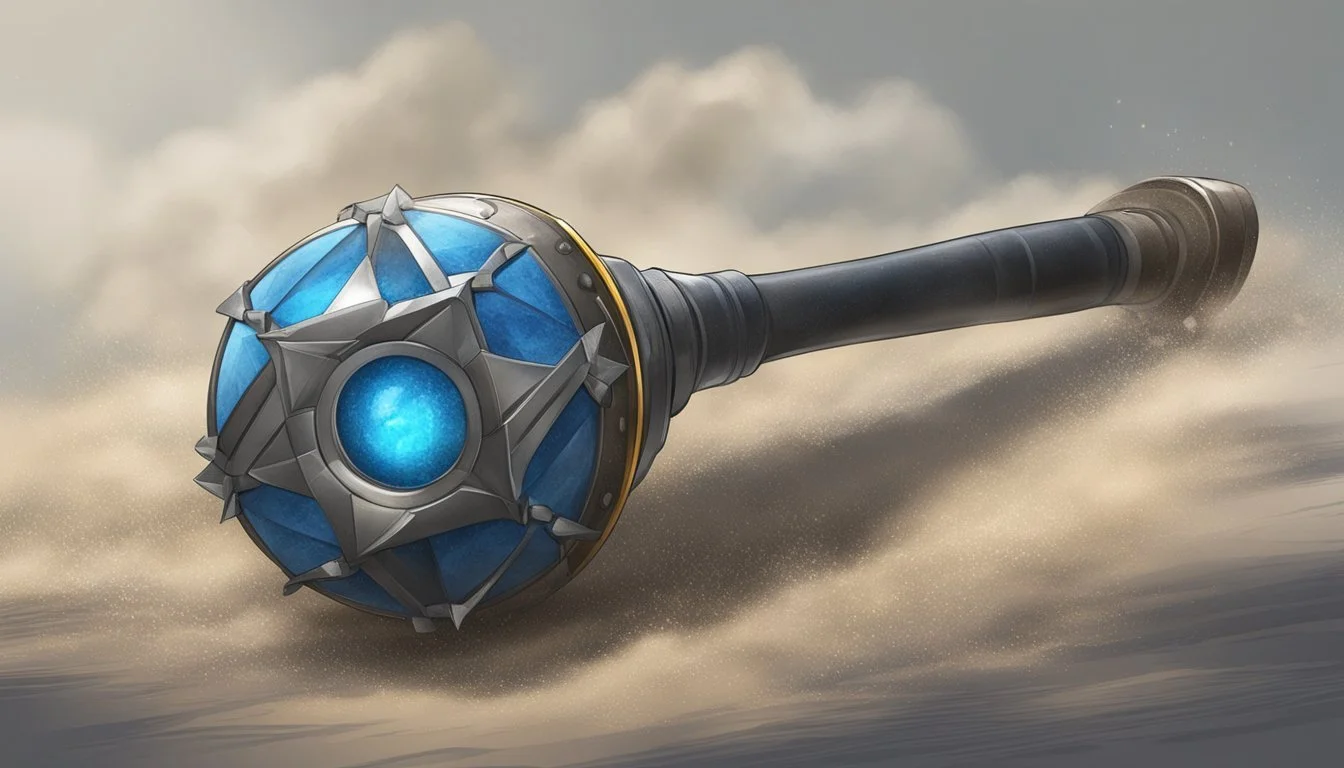How Long Does Mace Last?
Shelf Life and Potency Factors
Mace, commonly known as a defense spray, is a protective device widely recognized for its immediate impact on an assailant. Its effectiveness is due to the active ingredient, oleoresin capsicum, which is derived from hot peppers. When sprayed, it induces an intense burning sensation, temporary blindness, and inflammation, providing crucial moments for evasion. It's imperative to note that like many products, mace does have a shelf life. Manufacturers typically suggest that mace should be replaced every 3 to 4 years to ensure its reliability and potency during critical moments of self-defense.
Aside from its role in self-protection, mace is also a term used to describe a spice derived from the same plant that yields nutmeg (how long does nutmeg last?). The spice mace offers a lighter, yet similar flavor to nutmeg and is infused with a warm, distinctive aroma that enhances savory dishes, baked goods, and certain beverages. When using mace in cooking, it should be stored properly to maintain its flavor and aroma; however, unlike its namesake in self-defense, this spice does not come with an explicit expiration timeframe. It is recommended that mace, the spice, is stored in a cool, dry place and, if possible, used in its whole form to retain its essential oils and robust character until it is needed to flavor a dish.
Chemical Composition and Properties of Mace
Mace spray is a defense tool recognized for its potency and ability to incapacitate. An understanding of its chemical makeup is essential for discerning its effectiveness.
Essential Oils and Aromatic Compounds
The aromatic quality of mace spray is chiefly due to the presence of essential oils within the substance. These oils contribute to the pungent smell that is characteristic of mace. The composition of these oils can vary, but they play a crucial role in the overall sensory effects of mace.
Capsaicin Content and Its Effects
The primary active component in mace sprays is capsaicin, derived from chili peppers. The capsaicin content determines the 'heat' and, consequently, the potency of the mace. When deployed, capsaicin affects the target by creating an intense burning sensation on the skin as well as in the eyes and respiratory system. Side effects may include temporary pain, coughing, and difficulty in breathing, which help in deterring an attacker.
Capsaicin is measured in Scoville Heat Units (SHU), which directly correlate to the effectiveness of the spray. High capsaicin concentrations ensure that even a small amount can be highly impactful. However, the strength of the spray can diminish over time, making regular replacement and testing of the canisters important to maintain efficacy.
Culinary Uses of Mace
In the culinary world, mace is celebrated for its warm, slightly sweet, and aromatic flavor. It is a versatile spice that enhances both sweet and savory dishes, ranging from baked goods to custards (how long do custards last?).
Flavor Pairing and Recipe Integration
Mace offers a more intense yet refined flavor compared to nutmeg, making it an excellent spice for flavor pairing in various recipes. Chefs often integrate mace in:
Baked Goods: A pinch of mace can be added to cookies, cakes, and pastries to provide a subtle, warm flavor.
Savory Dishes: It complements meats like lamb or veal and is a common addition to stews and sausages.
Puddings and Custards: Its sweet aroma is particularly well-suited to creamy desserts. (What wine goes well with creamy desserts?)
A common practice is to add mace early in the cooking process, allowing its flavors to meld with the other ingredients.
Texture and Color Contributions
When it comes to texture and color, mace plays a subtle but distinctive role:
Whole Dried Aril: Often referred to as "blade" mace, the whole dried aril can infuse dishes with its color and can be easily removed after cooking.
Ground Mace: While more convenient, ground mace should be used sparingly to prevent overpowering a dish. It adds a golden-brown hue to lighter-colored recipes.
Mace's color contribution is particularly evident in light-colored dishes where its presence can be both seen and tasted, enhancing the dish's visual appeal alongside its flavor profile.
Shelf Life and Storage of Mace
The shelf life of mace varies depending on its form and how well it is stored. Mace's potency and flavor are best preserved when the spice is stored under appropriate conditions that limit degradation.
Factors Affecting Mace Longevity
Several variables play crucial roles in determining the longevity of mace:
Physical form: Whole mace typically lasts longer than ground mace, with a shelf life of up to 4 years when kept in ideal conditions.
Exposure to elements: Mace is sensitive to light, heat, and moisture, which can accelerate its expiration.
Packaging: Properly sealed containers can significantly extend mace's lifespan by protecting it from environmental factors.
Proper Storage Practices
For optimal preservation of mace, the following storage practices should be adhered to:
Temperature: Store mace in a cool, dry place, away from direct sunlight.
Containers: Use airtight containers with tight-fitting lids to protect against moisture and other contaminants.
Avoid extreme temperatures: Fluctuations in temperature can decrease mace's quality, so a stable environment at room temperature is ideal.
Shelf life indicators: Be aware of the expiration date provided by manufacturers, but also use sensory cues such as changes in color, aroma, and taste to assess the spice's quality over time.
Physical Forms of Mace and Their Longevity
Mace is a versatile spice available in whole, ground, fresh, and dried forms, each with distinct preservation needs and longevity. Understanding how each form affects shelf life is crucial for maintaining flavor and efficacy.
Whole versus Ground Mace
Whole mace retains its aromatic qualities longer than ground mace. The outer lacy coating of the nutmeg seed, whole mace, can be stored in airtight containers away from heat, light, and moisture, and will last for about four years before it starts to lose potency. When it's kept in optimal conditions, it will maintain its quality throughout this period.
In contrast, once ground with a spice grinder, mace's surface area increases and it becomes more susceptible to the elements. Ground mace typically has a shelf-life of up to three years but may begin to diminish in flavor after six months.
Fresh Mace vs Dried: Preservation and Use
Fresh mace is rare outside of its native growth regions and is often found in a dried form in most markets. Drying preserves the spice and enhances its shelf life. Fresh mace carries moisture, which can lead to quick spoilage and a significantly shorter shelf life compared to its dried counterpart.
Dried mace, when stored in ideal conditions—cool, dry, and dark—provides longevity and preserves the spice's character for cooking and seasoning use. Proper storage will ensure that the dried mace's potency and effectiveness as a culinary ingredient remains intact.
Recognizing Spoiled Mace
When Mace is spoiled, it may exhibit distinct changes in color, aroma, and flavor. Additionally, it can display certain physical signs that indicate it's no longer suitable for use and could potentially lead to health risks like skin irritation or vomiting.
Changes in Color, Aroma, and Flavor
Color: Fresh Mace should have a vibrant orange-red to reddish-brown hue. Spoiled mace often presents a dull, faded color.
Aroma: A strong, spicy aroma is characteristic of good-quality mace. A loss in aroma or an off-smell can signal spoilage.
Flavor: Mace should have a warm, spicy, and slightly sweet flavor profile. If the flavor becomes bland or disagreeable, the spice may have deteriorated.
Physical Signs and Health Risks
Physical Signs: Mace that appears clumped together or has mold growth should be discarded.
Health Risks: Consuming spoiled mace can lead to adverse reactions such as skin irritation or gastrointestinal discomfort, including vomiting. If one suspects the mace has negatively affected their health, they should seek medical advice.
Mace and Its Comparison with Other Spices
Mace, a delicate spice known for its slightly sweet and aromatic quality, is often compared to its 'sibling' spice, nutmeg, due to their common origin from the Myristica fragrans tree. Its shelf life and flavor intensity set it apart from other spices.
Mace versus Nutmeg
Mace and nutmeg come from the same tree but differ in their physical form and taste. Mace is the outer coating of the nutmeg seed and is less intense, requiring careful storage. It typically lasts up to a year when stored properly. Nutmeg, on the other hand, is the seed itself and can boast a shelf life of up to four years. In cooking, if mace is unavailable, nutmeg can be used as a substitute in a reduced amount due to its stronger flavor.
Mace in Relation to Cinnamon and Cloves
Cinnamon and cloves, like mace, are well-known for their warming, aromatic qualities. However, they differ in terms of longevity and taste. Cinnamon sticks (how long do cinnamon sticks last?) can last up to four years, while ground cinnamon maintains its potency for about two to three years. Cloves, both in whole and ground forms, can be used for up to one year, preserving their bold, piquant flavor.
When considering the storage conditions for these spices, mace, similar to cinnamon and cloves, prefers a cool, dark, and dry place. All three spices will deteriorate more rapidly if exposed to heat, light, or moisture. They play distinct roles in spice blends like garam masala, (how long does garam masala last?) curry powder, and ras el hanout (how long does ras el hanout last?), contributing their unique flavors but with varying degrees of pungency and warmth.
Mace in the Marketplace
In the realm of spices, Mace brings a distinctive taste and fragrance to the culinary landscape. Consumers should consider qualities like freshness and quality when purchasing, and be aware that, like other herbs and spices, Mace can lose its potency over time.
Purchase and Selection Tips
When buying Mace at a grocery store or specialty spice market, consumers should look for signs of freshness and quality—bright color and a potent aroma are good indicators. It's recommended to buy in smaller quantities to ensure the Mace retains its flavor, as the spice can deteriorate over time. Labels should be checked for expiration dates, and purchasers should keep in mind the recommended practice to replace their Mace typically every three to four years.
Sourcing and Availability
Mace is widely available in most grocery stores, either in the spice aisle or from specialty herb and spice purveyors. Quality may vary depending on the source; therefore, consumers may opt for reputable brands or sources known for their fresh, high-quality herbs and spices. When sourcing Mace, shoppers should consider its availability in both ground and whole blade form, which can affect the potency and longevity of the spice.
Mace as a Defense Tool
In the context of personal safety, experts emphasize the importance of understanding the tools at one's disposal. Mace, often referred to as pepper spray, is a common non-lethal defense tool renowned for its ability to incapacitate an attacker, providing an essential window for escaping an emergency.
Pepper Spray: Effectiveness and Expiry
Pepper spray's primary component is oleoresin capsicum, derived from hot peppers, which causes intense pain and temporary blindness upon contact. Its effectiveness hinges on the potency of this key ingredient. Expiration dates are vital; manufacturers generally suggest that mace should be replaced every 3 to 4 years to ensure reliability. After this period, its ability to deliver the expected kick in a crisis may decline.
Safe Storage and Emergency Use
Proper storage can significantly extend the shelf life of pepper spray. It should be kept in a cool, dry place to maintain its effectiveness. Furthermore, in an emergency, a person should be mindful of environmental factors, such as wind direction, to avoid self-contamination. A practiced and safe approach to storage and usage not only ensures the spray is potent when needed but also underscores the user's safety.
Impact of Environmental Conditions
Effective preservation of mace is influenced significantly by environmental factors, such as exposure to light and variations in temperature. Understanding these effects can help extend the shelf life of mace products.
Effects of Sunlight and Air Exposure
Exposure to sunlight can hasten the degradation of mace's active ingredients. Sunlight's UV rays can break down chemical compounds; therefore, it is recommended to store mace in a cool and dark place to prevent the loss of potency. Additionally, prolonged exposure to air can cause the active ingredients to evaporate, diminishing its effectiveness.
Temperature's Role in Mace Preservation
Mace's lifespan is also dependent on the storage temperature. Storing it at room temperature is advised for maintaining its integrity. Extreme temperatures, both hot and cold, can lead to a breakdown of the product. For instance, a refrigerator may seem like a suitable place due to its cool environment, but the potential for condensation could negatively affect the mace. Similarly, a freezer is not suitable for storage, as the extreme cold can cause the contents to solidify or separate. It's best to avoid fluctuations in temperature to preserve the mace's effectiveness.











